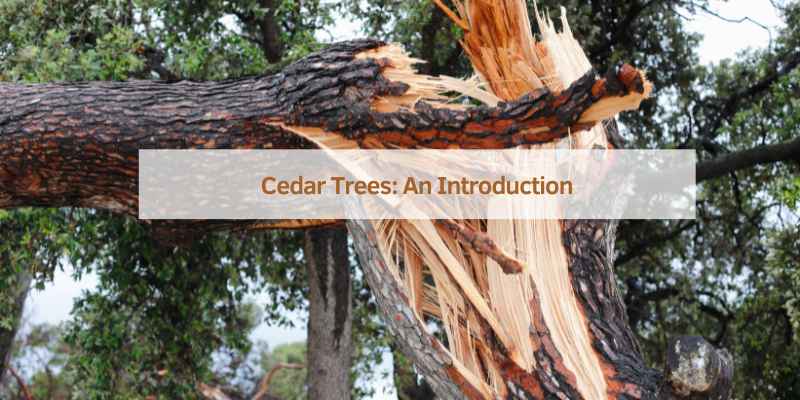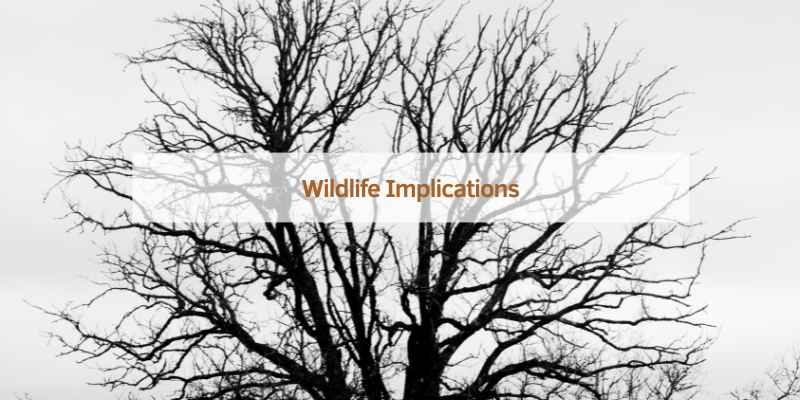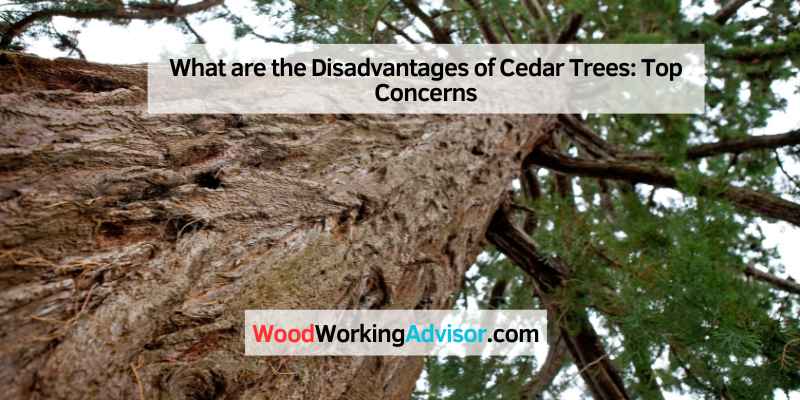Cedar trees can cause allergies and produce large amounts of pollen. They also require extensive maintenance and can spread aggressively.
Cedar trees, known for their durability and aromatic wood, have several downsides. These trees can trigger allergies due to the significant amount of pollen they release, affecting those with respiratory issues. Additionally, cedar trees demand regular upkeep to manage their growth and prevent them from spreading uncontrollably.
Their aggressive root systems can damage nearby structures and landscapes. Property owners often find the maintenance of cedar trees both time-consuming and costly. Despite their aesthetic appeal and beneficial properties, cedar trees may not be ideal for every environment. Proper consideration is crucial before planting cedar trees to avoid potential issues.
Cedar Trees: An Introduction
Cedar trees grow in many parts of the world. They are native to the mountains of the Himalayas and the Mediterranean region. There are many species of cedar trees, and they all have unique characteristics. Some of the most common species are the Atlas cedar, the Deodar cedar, and the Lebanon cedar. These trees can grow very tall and live for many years. Cedar wood is often used in construction and furniture making.
Cedar trees are popular in landscaping because they look beautiful. They have lush, green leaves and a pleasant scent. Many people plant them in their yards or gardens. They can provide shade and privacy. Cedar trees are also resistant to pests and diseases. They need little maintenance, which makes them a good choice for busy homeowners.

Allergenic Properties Of Cedar
Cedar trees can cause severe seasonal allergies. This is often called “Cedar Fever”. People may experience sneezing, runny nose, and itchy eyes. Cedar pollen is very fine and spreads easily. High pollen counts can make outdoor activities hard. Children and older adults can suffer the most.
Cedar trees release a lot of pollen into the air. This can reduce air quality. Poor air quality can affect breathing for many people. Those with asthma can have more frequent attacks. The fine pollen can spread over long distances. This means even those far from cedar trees can suffer.
Environmental Concerns
Cedar trees can become an invasive species. They spread quickly and take over land. This can cause problems for local plants and animals. They may block sunlight. Other plants cannot grow well. This reduces the variety of plants in the area.
Cedar trees can change the soil. This makes it hard for other plants to survive. Animals that rely on those plants may leave the area. This reduces biodiversity. Having fewer types of plants and animals is not good for the environment.
Growth And Maintenance Challenges
Cedar trees can be prone to insect infestations and disease, which require diligent maintenance. Their extensive root systems may disrupt nearby structures and utilities.
Space Requirements
Cedar trees need a lot of space to grow. Their roots spread wide and deep. Small yards may not be suitable. Over time, their branches can reach out far. This can crowd other plants and structures. Pruning is needed to manage their size. This can be time-consuming and costly.
Water Consumption
Cedar trees require a lot of water, especially when young. They may need frequent watering during dry periods. This can increase your water bill. In drought-prone areas, this can be a problem. Overwatering can also lead to root rot. Finding the right balance is tricky.
Cedar And Fire Risk
Cedar trees can catch fire easily. Their oils make them very flammable. Even small sparks can ignite them. This is a big danger in dry areas. Fires spread quickly with cedar trees around. Homes near cedar trees are at high risk. Firefighters find it hard to control fires with cedar trees. People should be aware of this risk.
Cut back cedar trees near homes. Remove dry leaves and branches from the ground. Plant less flammable trees instead of cedar. Use fire-resistant materials for building homes. Create firebreaks to stop fires from spreading. Educate communities about fire safety. Clear underbrush regularly to reduce fuel for fires.
Disease Susceptibility
Cedar trees often face diseases. Cedar-apple rust is a common problem. Root rot also affects cedar trees. Twig blight can damage branches. Cedar-quince rust is another issue. Cedar-hawthorn rust can harm leaves. Phomopsis tip blight kills new shoots.
Choose disease-resistant cedar trees. Water trees properly to keep them healthy. Prune infected branches to stop disease spread. Use fungicides if needed. Improve soil drainage to prevent root rot. Inspect trees regularly for signs of disease.
Economic Considerations
Cedar trees need regular care to stay healthy. Pruning and watering are necessary and can be expensive. Hiring professionals for these tasks adds to the cost. Cedar trees often need special treatments for pests. These treatments can be pricey. Routine inspections are also needed to catch issues early. The cost of these inspections can add up over time. Some homeowners find the maintenance costs too high.
Cedar trees can affect property values. Some buyers find cedar trees attractive, boosting property value. Others see the maintenance costs and are turned off. Cedar trees can drop needles and other debris. This can make the yard messy and hard to clean. The cost of cleanup can be a downside for buyers. Potential buyers might worry about the health of the tree. A sick tree can lower property value. It’s important to consider these factors when planting cedar trees.
Wildlife Implications
Cedar trees can negatively impact wildlife by outcompeting native plants, reducing biodiversity, and altering habitats. Their dense foliage limits sunlight, hindering undergrowth essential for many species.
Cedar As Habitat
Cedar trees provide shelter for some animals. Birds and small mammals often use these trees for nesting. Insects also find homes in cedar bark. Yet, cedar trees can limit biodiversity. Other plants and animals may struggle to survive near them. Cedar trees can be very dominant in some areas.
Conflicts With Human Activity
Cedar trees can cause problems for farmers and landowners. They consume a lot of water, which can dry out the soil. This makes it hard for other plants to grow. Cedar roots can also damage structures like fences and pipes. People may find cedar pollen irritating, causing allergies. In some regions, cedar trees can be a fire hazard. Dense cedar forests can make fires spread quickly.

Frequently Asked Questions
Why Do Ranchers Not Like Cedar Trees?
Ranchers dislike cedar trees because they consume valuable water and nutrients, reducing resources for grass and livestock.
What Are The Negatives Of Cedar?
Cedar can be expensive and requires regular maintenance. It may fade over time and is susceptible to insect damage.
Are Cedar Trees Good For Anything?
Yes, cedar trees provide valuable wood, natural insect repellent, and pleasant aroma. They offer shade and enhance landscaping.
How Long Will Cedar Last?
Cedar wood can last 15-30 years outdoors and over 40 years indoors with proper maintenance. Its durability makes it a popular choice.
Conclusion
Cedar trees, despite their beauty, have notable disadvantages. They can attract pests, require significant maintenance, and pose allergy risks. Their size can also overwhelm smaller spaces. By understanding these drawbacks, you can make informed decisions about incorporating cedar trees into your landscape.
Choose wisely to ensure your garden flourishes.


